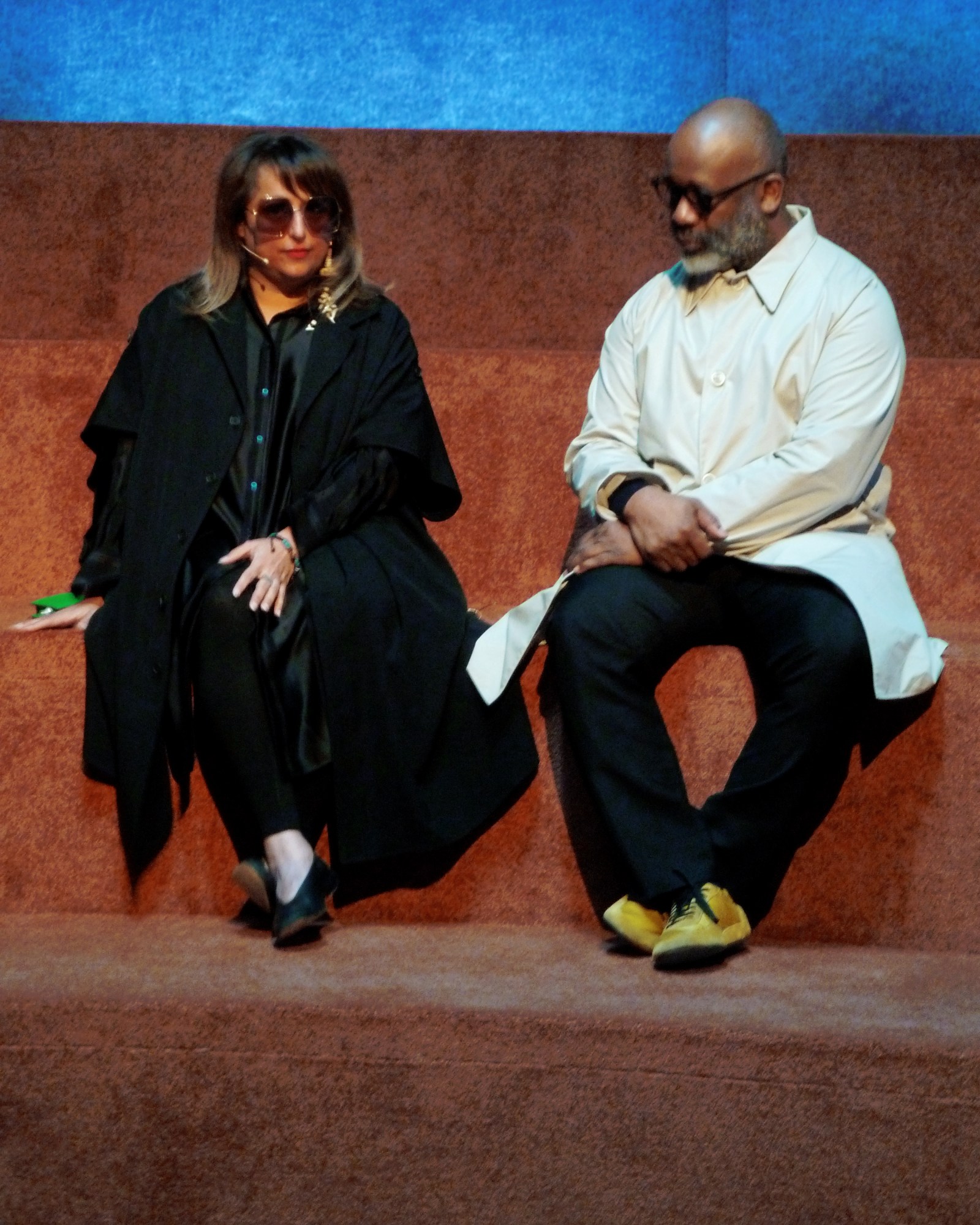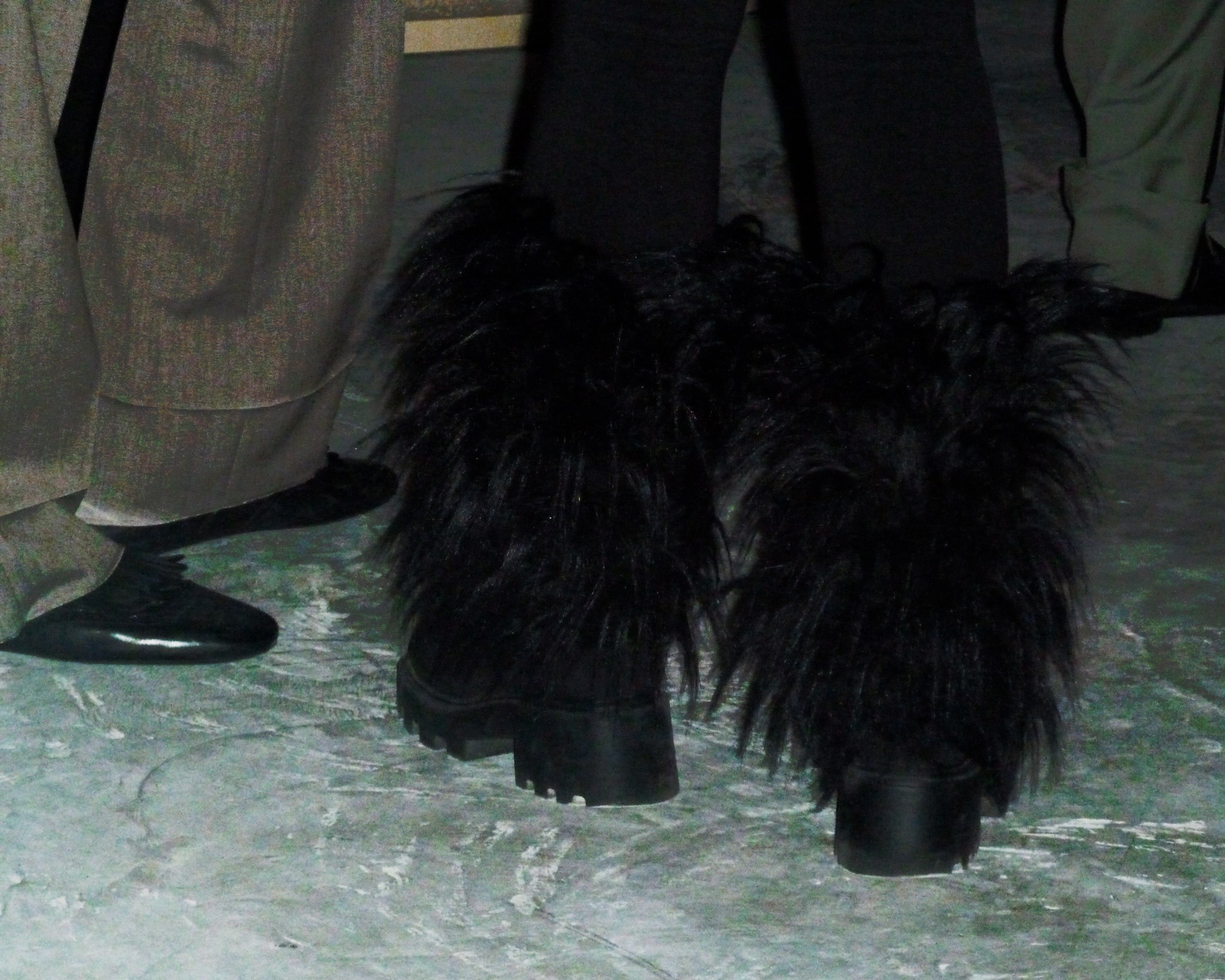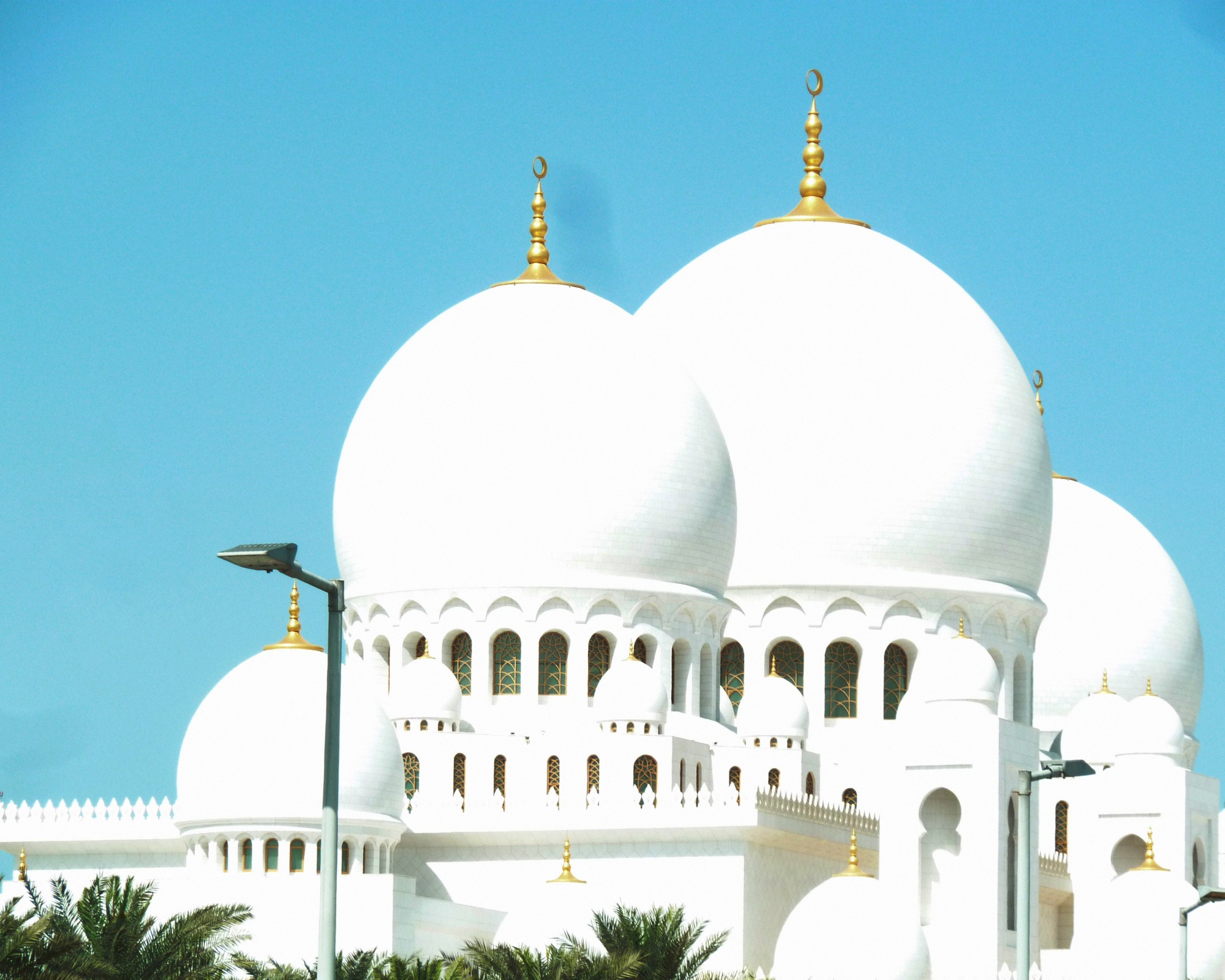No one quite does cultural programming like Prada—perhaps because their output never seems particularly programmed or done with an some type of ulterior motive. Rather, these ambitious experiments seem to organically spring forth from the relationships and curiosities of its founder, spiraling onto Earth like the gigantic Carsten Holler slide that famously extends from Miuccia Prada’s Milan office. “There’s no brief. It’s just a conversation sitting at dinner,” Theaster Gates explains to me about how these types of projects are born.
Earlier this week, I flew to Abu Dhabi to visit the Chicagoan’s Prada Mode installation in the emirate. It marked the eleventh (and Theaster’s third) iteration of Prada Mode, the globally roving series of artist-made spaces that are part nightclub, part community center, part restaurant, and part twisted airport lounge. The aforementioned Carsten Holler is the founding father of the project, which extended from his Prada-backed project Double Club, a nightclub-bar-restaurant that oscillated between Western and Congolese music and cuisine.
I’ve always personally been fascinated by Prada’s explorations into relational aesthetics. How genius for a fashion brand to understand that the alchemy of creating spaces for people to simply exist—and to exist fabulously—is what creates modern luxury. No one in the world understands the magic of hanging out like Theaster Gates, whose Abu Dhabi installation takes a slightly less clubby approach than past iterations. Having never been to the emirate before, Theaster organized the space around the simplest possible geometric forms—one room that’s a square, one that’s a circle—and let the rest unfold through those who occupied the space. The installation’s program featured artist talks, a weaving workshop, live music, as well as DJ sets curated by NTS Radio. I spoke with Gates directly after his press conference on the project.

THOM BETTRIDGE: During the press conference, you stopped yourself from sharing a take about Kendrick Lamar’s Superbowl performance. What was your take?
THEASTER GATES: I was talking to Sabina [Theaster’s studio manager] about this all morning. And even before I saw other people’s memes, I was like, “An American flag made of black men. What a performative appropriation of this symbol.” I can’t get over Doechii and Kendrick in this moment, and it makes me think of Motown — these moments where Black folk had to be on their best behavior all the time. And that best behavior was a controlled sense of the Black self relative to the white imagination. So you wore a suit in the 50s, you kept it tight, you had to be non-threatening and non-engaging. There were no words to be articulated beyond the music, and you walked through the back fucking door. And then here you have Kendrick, so deeply invested in speaking truth to power, but from Compton from the streets and being poetic even in his diss. And then you have Doechii being so uncompromisingly honest about her sexual life, and about her desire to make it in the industry. When given the opportunity, there is tremendous self-realization and self-determination that is evident in the creative work. You just gotta give it up.
I also feel like we’re in this age where pop music has reached the operatic stage — where it’s not just music — it’s the fashion, it’s the art direction, it’s the full gesamtkunstwerk. What’s it like for you working across genres as an artist operating in fashion? For example, I was talking to Tremaine Emory recently–
My man.
And he was telling me about the store you guys made together. And of course this is your third time creating Prada Mode. How do you look at these forays into fashion? And what curiosity does it spark for you creatively?
I’ve just done things with friends. Like when I met Tremaine, he wasn’t making clothes, you know? He was talking about different things. Tremaine was telling Ye for years, “Hey, you need to know this dude from Chicago named Theaster. So eventually Tremaine and Ye’s team came to the bank — to my building — but I was out of town. So then a bit later, Tremaine says, “Hey, I’m in LA.” I’m in LA. So when we go hang out at Chateau Marmont, and then we’re off to the races. Then we were all in London. Then Tremaine was in Japan. So, you know, all this time, friendship is building. So when he approached me about Denim Tears, he was telling me he had just gotten this archive of African books, and that he was excited about the idea of him having his own archive, kind of like Johnson Publishing. So he asked me to build a space, and we just did it. It wasn’t — I’m not looking for work. It’s the same way that some of my lesser known friends ask me to do things. You know, my friend Joan Harris who is a patron in Chicago, we were hanging out and she said, “I’d love you to make me a breakfast table for my Michigan house.” And was such a sincere request, like, “I bet you would make a great breakfast table.” And I love being in service and supporting my friends.
You know, with the platform Prada has, what an amazing friendship and alliance to be connected to. I felt a tremendous sense of freedom with this project — I treated the project the way I would treat any artistic problem. You know, there’s not much difference between a project like this and the Serpentine, in a way. It’s public facing. It has predetermined functions, and then you have to find the creative moment inside of it.

How does it work when Prada brings you into their machine? Are you sitting down with Miuccia dreaming up these big ideas?
Broadly speaking, it’s super informal to start. “We’re thinking about doing this thing in Abu Dhabi, would you be willing to think with us about it?” There’s no brief, it’s just a conversation sitting at dinner. “Hey, we’re really thinking about how to increase our DEI initiatives. Is this something you can help us with?” When you read about the lives of artists, the biographies of cats like Lichtenstein and Warhol, then were all involved in pedestrian activity, especially in the earlier years of their lives. So, in my case, having access to a platform like Prada’s and them asking me, “Hey, do you know any designers of color? Or any administrators who might be interested in joining our labor force?” That’s an amazing call. So I feel like we’re in the process of building trust through these small projects that I hope will turn into an ongoing pipeline of opportunity for others.
It’s quite interesting, because to use an art world term, Prada was quite early to understand the “relational” part of a brand. That it’s not just buying product and selling product, but that you can create a universe that people can hang out in. And I think Prada MOde is very much the most extreme actualization of that idea. You can’t buy anything in the building we’re sitting in right now. It’s just social theater.
You know, I’ve actually never heard anyone within the organization describe what they imagine it is. There’s no predetermined brief given to me. I think of it as an opportunity to say thank you in the form of a place. You know, brands do private dinners and other private things, but this is public.
Yeah, I mean, who is out there investing in public spaces besides the government and Prada?
And they’re asking heavy hitters — Martine Syms, Mickalene Thomas, Carsten Holler. Take, Carsten’s Double Club — you create a space that’s Dutch during the day and African at night — that project was not afraid to be political, it was not afraid to be messy. I think one test for artists is not how well they perform in a museum, but how well you perform outside.
That’s how you build real audiences. Like going back to the Tremaine thing, you weren’t speaking to the normal art-going crowd with that project. You were speaking to kids, skaters, etc.
And skateboarders will be art consumers. I was saying yesterday that fashion was like a gateway drug for me, you know, to advance my knowledge of aesthetics, creativity, and art. So they’re learning to be part of avant garde culture.

